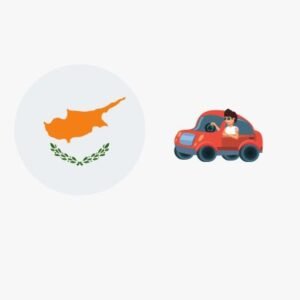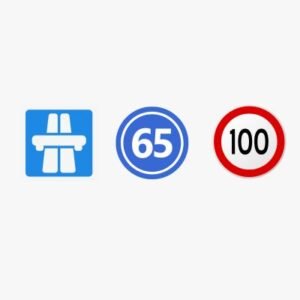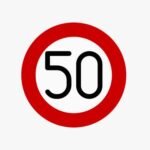Driving in Cyprus

CYPRUS VISITOR INFORMATION AT A GLANCE
Cyprus has a population of around one million, comprised of two main ethnic communities, Greek Cypriots and Turkish Cypriots
There are more than 801000 registered vehicles.
In this number, there are 550000 passenger cars, 134200 trucks, 1930 taxis, 52400 Motorcycles, 11000 hired vehicles without a driver, 3950 buses.
The island of Cyprus is situated at the north-eastern end of the Mediterranean basin, covering an area of 9,251 sq km.
Greek and Turkish are the official languages. Also, English is extensively spoken, especially in tourist areas.
The international car ID code is ‘CY’

Motorway speed limits
Motorway speed limits
The maximum speed limit is 100 km/h for buses, passenger cars and motorcyclists. The minimum speed limit is 65 Km/h.
The maximum speed limit is 80 km/h for trucks (heavier than 3,000 kg) and also for vehicles with a trailer. The minimum speed limit is 65 Km/h.
Driving a vehicle on a highway by a person who holds a learner ́s license is not allowed, except for training purposes only and provided that he or she is accompanied by a licensed driver instructor, or for testing purposes for obtaining full driving license.
Vehicles that have not been manufactured for speeding above 65 Km/h, are strictly not allowed to be driven on motorways (highways)

Highways
Vehicles move in the left lane. Use of the right lane is only allowed when: Over taking another vehicle
The left lane is not free
Giving priority to a vehicle entering the highway
The following is forbidden on highways:
– To stop and/or park a vehicle
– Use by pedestrians.
– Use by cyclists, motorcyclists or agricultural vehicles
Unusual traffic laws
Remember to drive on the LEFT in Cyprus, like in the UK but unlike most of the
rest of Europe.
Be careful before sounding your horn in Cyprus. Horns should be used only when it is deemed necessary in order for the drivers to warn other road users for their presence on the road any road.
Horns should not be used at any time in residential areas except on emergency.

Driving Rules in Residential Areas
Here, the maximum speed is 50 km/h, if there is no other traffic signal to determine.
Speed limits for specific categories of motor vehicles
As maximum speed limit for trucks, trailers, articulated vehicles and trailers which have weight greater than 3,000 kg on roads with two lanes, the limit of 64 km/h has been set, while on roads with four lanes, a limit of 80 km/h has been set.Where road signalling provides lower speed limit, this lower speed limit applies. is 100 km/h for buses, passenger cars and motorcyclists. The minimum speed limit is 65 Km/h.

Drink-drive
According to the existing legislation, It is prohibited to drive if the levels of alcohol in the blood or breath are above the admissible limit.
The admissible limit in the blood is 50 milligrams of alcohol per 100 millilitres of blood (BAC 0.5 mg/ml). The admissible limit in the breath is up to 22 micrograms of alcohol per 100 millilitres of exhaled air.
In 2012, the House of Representatives passed amendments governing the issuing of fines. With these, the issuing of a fine when driving under the influence of alcohol became possible for the first time. The fines were separated in gradients, since July, 2012, depending on the quantity of alcohol in a breath sample when it is more than the specified, by law, limit of 22 μg but less than 70μg.
Since the 6th of May, 2015, a new alcohol limit has been prescribed for the following categories of drivers:
Persons who have been holders of a driving licence for less than three years, learner drivers, persons driving motorbikes, motorcycles, tricycles, quadricycles, drivers of lorries of a maximum weight that exceeds 3.5 tons, drivers of buses with more than eight passenger seats, not including the driver’s seat, taxi drivers when driving on duty and drivers of vehicles that carry dangerous cargo.
The new prescribed limit for the above mentioned categories is 9 micrograms of alcohol per 100 millilitres of breath or 20 milligrams of alcohol per 100 millilitres of blood.
Similar amendments governing the issuing of fines for the above special categories of drivers are expected to be passed in the near future, after a proposal that was submitted by the Police, in June, 2015.
For those offences that a police officer or the court may impose penalty points, there are legal provisions in article 20A, of the Motor Vehicles Law (Law 86/1972, as amended). Among these offences is the driving under the influence of alcohol and the refusal or avoidance of a driver to give a Breath Sample for preliminary or final testing.
Those penalty points accumulated electronically on a driver ́s licence, after the payment of penalty notices are not considered to be convictions. Only court decisions are considered to be convictions. Nevertheless, all penalty points are considered seriously when a decision is going to be taken for the revocation of a driving licence.
The aim for the future is to develop the use of alcohol interlocks in rehabilitation programmes for high level offenders and for repeated offenders.
In Cyprus, according to the statistics available, during the period 2011 – 2023, driving under the under the Influence of Alcohol was the most serious cause of fatal road traffic collisions: 28.96% of all fatal road traffic collisions occurred due to this traffic violation.
The aim is to intensify enforcement of drink driving laws by setting targets for minimum levels of alcohol checks of the motorist population: 1 in 3 motorists should be checked each year.

Useful regulations and advice
What documents must I be able to produce if requested by the police?
If stopped, you should be able to show your valid driving licence, vehicle registration documents, proof of insurance, proof of roadworthiness, vehicle circulation licence.
Do I need to carry a reflective jacket in my car? If so, how many?
There is no obligation for that, but people are advised to do that. Especially at night, they are strongly recommended to do that.
Do I need to carry a first – aid kit or a fire extinguisher?
First – aid kits and fire extinguishers must always be carried by taxis, buses and public use Lorries. The drivers of these vehicles must have the above items in a proper place and in such a condition that they can be used at any moment, during an emergency.
This legal obligation does not cover private cars, but nevertheless, drivers are recommended to bring always such equipment in their car, for their own safety, in case of emergency.
Any other requirements I should be aware of, regarding the equipment or paperwork I need for a journey in or through your country?
It is compulsory for drivers to carry two red warning triangles, with a base, in their vehicle and use it to warn other traffic, if they are involved in an incident, breakdown or a road traffic collision or if they park or immobilize their vehicle. They have to place one of the triangles at the back side of their car, in a distance of 6 metres, in residential areas and in a distance of 50 metres, outside of residential areas, including the highways.

Breakdown
Please give brief advice on what I should do if my vehicle breaks down, on the motorway and on other roads.
If you are in a rented car, contact the rental company, giving them details of what has gone wrong, as well as your location. If you are travelling in your own car, and do not have breakdown recovery insurance, then you can request assistance direct from a recovery firm.
You will have to pay for this service.

Driving Offences
Driving Offences
Causing death by dangerous driving – 5 -10 points – fine determined by the court
Dangerous driving – 3 – 6 points – fine determined by the court
Careless driving – 3 – 6 points – The fine will be determined by the court
Signalling – The driver failing to make signals – fine €25
Failing to stop after an accident – 5 – 10 penalty points – The fine will be determined by the court
Non-mechanical vehicle on motorways and high-speed roads – fine €85
Failing – to comply with traffic lights – 2 – 4 penalty points – fine €85
Failing – to comply with directions given by a Police Officer – fine €55
Failing – to comply with directions given by traffic signs – fine €25
Failing – to stop or to conform to the signals of the traffic warden or Crossing Patrol at a school crossing – fine €55
Failing – to stop and allow precedence to pedestrians on a pedestrian crossing – fine €85
Driving the wrong way down a one-way road. – fine €25
Failing – to slow down to allow the safe passage of other vehicles or traffic – fine €55
Overtaking on the left, on a bridge, top of a hill, opposite a junction, pedestrian crossing a continuous line or other sign – fine €55
Driving of motor vehicles in a pedestrian street – fine €55
Illegal entry of motor vehicles on the road with restrictions on the movement of motor vehicles – fine €55
Priority – a driver who does not give priority to vehicles coming from the right at a junction with the main road or at controlled crossings or who drives into the main road without stopping or slowing down – fine €55
Unnecessary reversing – fine €25
Unnecessary use of the horn in built-up areas – fine €25
PLEASE DRIVE CAREFULLY
Closing Note: The Z&G Rentals team wishes you a safe and enjoyable journey!
